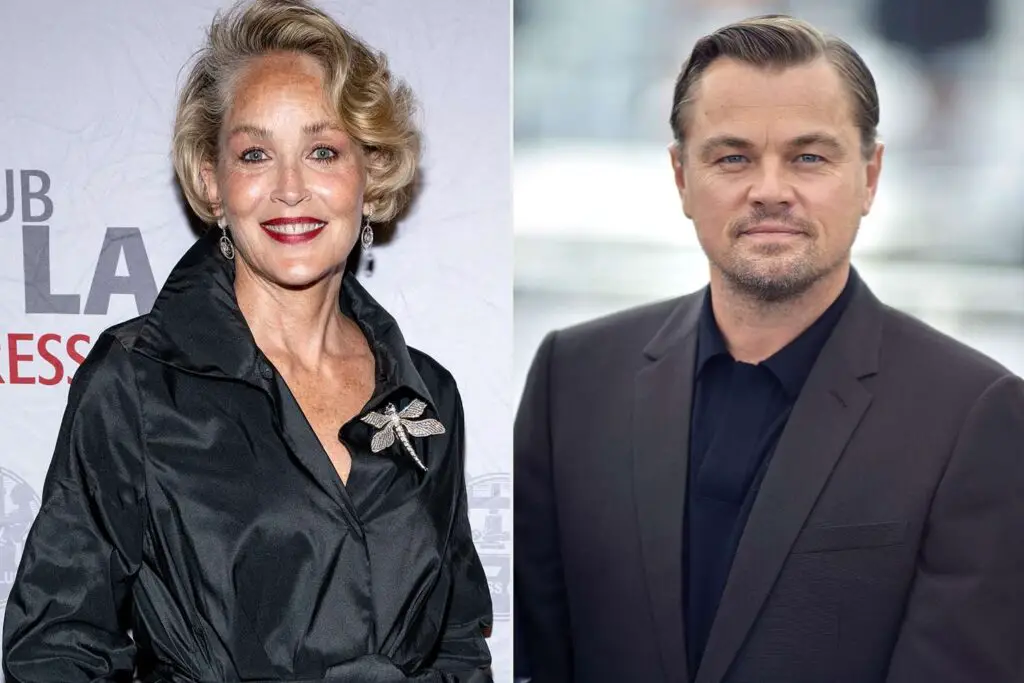In 1995, Sharon Stone made an unconventional and pivotal decision during the production of the revisionist Western drama “The Quick and the Dead,” directed by Sam Raimi. At the time, Leonardo DiCaprio was a rising star, fresh off his Oscar-nominated role in “What’s Eating Gilbert Grape.” Stone, who was both starring in and co-producing the film, was determined to cast DiCaprio and Russell Crowe, despite their lack of widespread fame at the time. Her commitment to this casting decision was so strong that she was willing to pay DiCaprio’s salary out of her own pocket after the studio, TriStar Pictures, refused to cast him.
“The Quick and the Dead”: A Risky Endeavor with a Visionary Cast
“The Quick and the Dead” is set in the Old West town of Redemption in 1881, where a deadly dueling competition takes center stage. Stone played the role of “The Lady,” a gunfighter seeking revenge for her father’s death. The film also marked the American Western film debut of Russell Crowe and included significant contributions to the screenplay from Joss Whedon. Despite its eventual acclaim, especially for its performances, direction, cinematography, and musical score, the film initially faced a dismal box-office performance and mixed reviews.
Stone’s insistence on casting DiCaprio was rooted in her belief in his talent. During auditions, DiCaprio was the only one who deeply impressed her, showcasing an emotional range that Stone found compelling. This led to her bold decision to cover his salary, a move that also motivated her to take a more active role in production. She refused to accept a “vanity deal” and made it clear that she intended to be actively involved in the production process, not just in name.
Behind the Scenes: Challenges and Triumphs
The production of “The Quick and the Dead” faced various challenges. The filming, originally set to begin in October 1993, was delayed due to Russell Crowe’s commitments in Australia. The principal photography eventually spanned from November 1993 to February 1994, taking place in Arizona. The film’s detailed production included extensive gun training for the cast and intricate aging techniques for the firearms used, adding authenticity to the Western setting.
Sharon Stone’s role as a co-producer also saw her making significant decisions regarding the film’s content. She chose to remove a love scene with Crowe from the final cut for the U.S. release, believing it didn’t fit the established reality of the film, although it was included in overseas releases.
Leonardo DiCaprio’s Gratitude: A Testament to Stone’s Influence
Decades later, DiCaprio expressed profound gratitude to Stone for her unwavering support and belief in his talent. He acknowledged her role in giving him the opportunity to be part of “The Quick and the Dead,” which played a crucial role in his early career. This gesture by Stone not only showcased her commitment to artistic vision but also her willingness to challenge the norms of Hollywood casting, ultimately paving the way for DiCaprio’s illustrious career.
In summary, Sharon Stone’s decision to pay Leonardo DiCaprio’s salary for “The Quick and the Dead” in 1995 was a significant moment in Hollywood history. It reflected her commitment to artistic integrity and her willingness to challenge the status quo in the industry. The film, although initially met with mixed reviews, has since gained recognition for its artistic merits, thanks in part to the performances of its carefully chosen cast.


